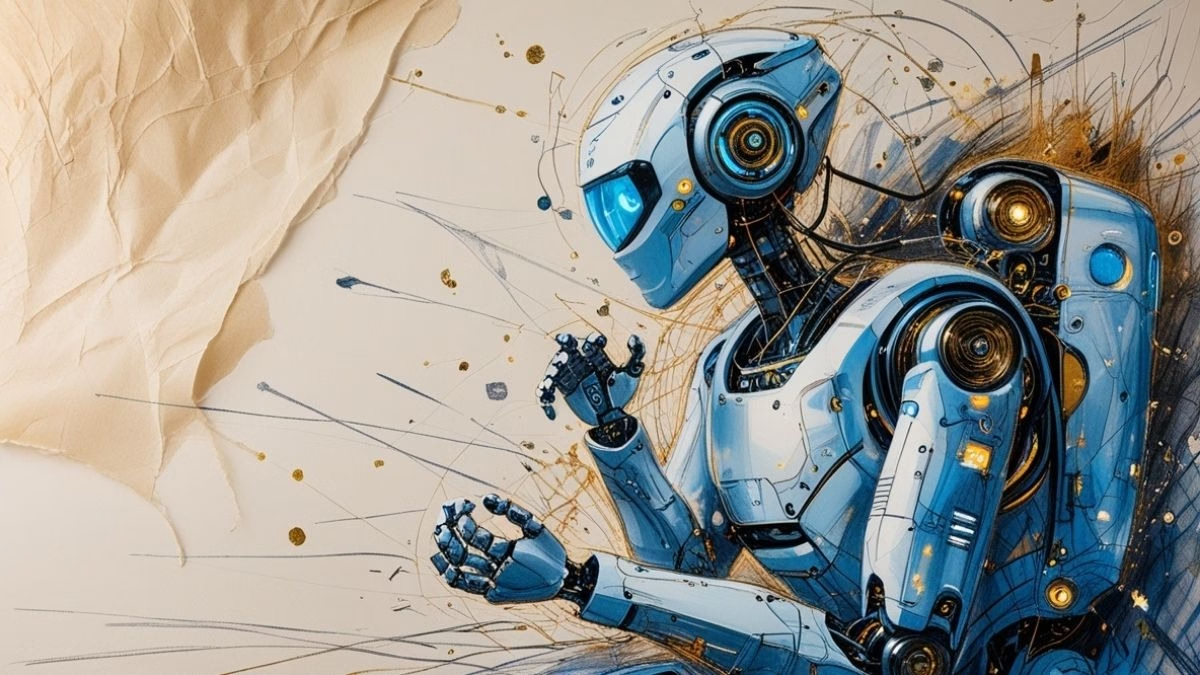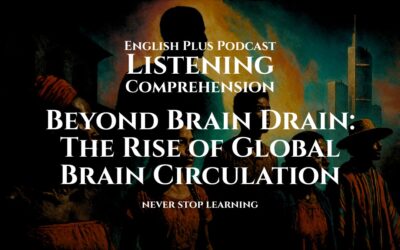Sharpen Your Listening Skills for Exam Success
Welcome to your listening comprehension practice session! Excelling in the listening sections of international exams like the SAT, TOEFL, and IELTS isn’t just about understanding English; it’s about strategic listening. These exams test your ability to grasp main ideas, identify specific details, understand a speaker’s attitude or purpose, and make inferences.
To help you prepare, here are a few key strategies to keep in mind:
- Predict the Content: Before the audio begins, quickly look at the questions. Try to predict what the topic will be about and what kind of information you need to listen for. This primes your brain to catch the relevant details.
- Listen for Signposts: Speakers use “signposting language” to guide you through their talk. Phrases like “First,” “On the other hand,” “To sum up,” or “A key aspect is…” are clues that signal a new point, a contrast, or a conclusion. Paying attention to these can help you follow the structure of the talk.
- Don’t Get Stuck on a Single Word: You might not understand every single word, and that’s okay! The goal is to understand the overall message. If you miss a word, don’t panic. Keep listening to the context, and you can often figure out the meaning.
- Paraphrasing is Key: The questions will rarely use the exact same words as the listening script. Instead, they will paraphrase the ideas. Your task is to match the meaning, not the words. This is why a strong vocabulary is so important.
- Note-Taking is a Skill: Practice taking short, effective notes. You don’t need to write full sentences. Use abbreviations, symbols, and keywords to capture the main points and important details. This will be your reference when you answer the questions.
Today’s listening practice is a university lecture on the evolution of robotics. It’s a topic that requires you to follow a timeline and understand both technical and conceptual information – a perfect workout for your exam skills. Let’s begin.
Listening Audio
[ppp_patron_only level=5]
[/ppp_patron_only]
Listening Transcript: Please do not read the transcript before you listen and answer the questions.
Good morning, everyone. In today’s lecture, we’re going to embark on a fascinating journey through the annals of robotics, tracing its evolution from rudimentary concepts to the sophisticated autonomous systems that are increasingly becoming a part of our daily lives. The concept of creating artificial beings has captivated human imagination for centuries, long before the technology existed to make it a reality. We can find mentions of mechanical servants in ancient myths and automatons in the workshops of Renaissance inventors. However, the modern era of robotics really began to take shape in the 20th century.
The very term ‘robot’ was coined in 1920 by the Czech writer Karel Čapek in his play “R.U.R.,” which stands for “Rossum’s Universal Robots.” Interestingly, these robots were not mechanical but were artificial organic beings, closer to what we might call androids today. The word itself, ‘robota’ in Czech, means ‘forced labor,’ and this etymology has profoundly shaped our perception of robots as machines designed to serve or replace human effort.
The first major leap from fiction to reality occurred in the industrial sector. In 1954, George Devol patented the first programmable robotic arm, which he named the “Unimate.” This wasn’t a walking, talking robot of science fiction, but a powerful, stationary arm capable of performing repetitive, and often dangerous, tasks on an assembly line. The Unimate was first installed at a General Motors plant in 1961, where it was used to lift and stack hot pieces of metal. This marked the dawn of industrial robotics, a revolution that transformed manufacturing by increasing efficiency, precision, and safety. These early industrial robots were pre-programmed; they could only follow a fixed sequence of instructions and had no ability to perceive or react to their environment.
The 1960s and 70s saw significant advancements in robotics research, largely fueled by the burgeoning fields of computer science and artificial intelligence, or AI. Researchers began to dream of creating robots that could see, touch, and make decisions. This led to the development of sensors. Early robotic sensors were crude – simple switches or beams of light. But they were a crucial first step towards creating robots that could interact with an unpredictable world. Stanford University became a hub for this research, with projects like the “Shakey” robot. Developed in the late 1960s, Shakey was the first mobile robot to reason about its own actions. It could navigate a room, avoid obstacles, and move objects according to simple commands. What made Shakey so groundbreaking was its software architecture. It could analyze a command, break it down into smaller steps, and execute them, all while perceiving its surroundings through a camera and touch sensors.
As we moved into the late 20th and early 21st centuries, the focus expanded beyond the factory floor. Robotics began to venture into more complex and dynamic environments: space exploration, medicine, and even our homes. NASA’s Sojourner rover, which landed on Mars in 1997, is a prime example of robotics pushing the frontiers of human endeavor. It operated semi-autonomously, navigating the Martian terrain and conducting experiments under the guidance of commands sent from Earth, which, due to the distance, had significant time delays. This required the rover to have a degree of self-reliance and problem-solving capability far beyond its industrial predecessors.
In the medical field, the introduction of systems like the da Vinci Surgical System in the early 2000s revolutionized minimally invasive surgery. A surgeon sitting at a console can control a set of robotic arms with extreme precision, making smaller incisions, reducing blood loss, and speeding up recovery times for patients. These are not autonomous surgeons, but highly sophisticated tools that enhance the skill of a human expert.
Now, let’s consider the present state of robotics. We are in the era of collaborative robots, or “cobots,” designed to work alongside humans. Unlike their powerful, caged-off ancestors in factories, cobots are equipped with advanced sensors that allow them to operate safely in a shared workspace. Furthermore, the convergence of robotics with cloud computing and machine learning has been a game-changer. Modern robots are no longer isolated machines. They can be connected to a network, sharing data and learning from the experiences of other robots. This collective learning allows for rapid improvement in performance for tasks like object recognition and manipulation. For instance, a robot in one factory might struggle to pick up a new type of object, but once a solution is found and uploaded to the cloud, every other connected robot instantly learns the same skill.
Looking to the future, the trajectory is undoubtedly towards greater autonomy and intelligence. We’re seeing the emergence of humanoid robots that can walk, run, and interact with the world in ways that mimic humans. Companies like Boston Dynamics have created bipedal and quadrupedal robots with astonishing balance and agility. While their immediate applications are still being explored, they hold immense potential for disaster response, logistics, and exploration in environments too dangerous for humans.
The next frontier is likely to be the integration of more advanced AI, particularly in the realm of social robotics. The challenge is no longer just about making a robot perform a physical task, but about making it understand social cues, communicate naturally, and act in a manner that is predictable and trustworthy to humans. This involves tackling complex issues in natural language processing, emotional recognition, and even ethics. As robots move from being tools to being companions, assistants, and caregivers, we must grapple with profound questions about their role in our society. What level of autonomy is acceptable? How do we ensure they operate safely and ethically? The future of robotics is not just a technical challenge; it is a societal one.
Listening Quiz
Keywords & Phrases
Rudimentary concepts:
What it means: This phrase refers to the most basic or earliest ideas about a subject, before they become developed and complex. ‘Rudimentary’ means basic or simple.
How it was used in the listening: The lecturer used this to describe the very early, non-technical ideas about artificial beings found in myths, contrasting them with today’s advanced technology. “In today’s lecture, we’re going to embark on a fascinating journey… tracing its evolution from rudimentary concepts to the sophisticated autonomous systems…”
Etymology:
What it means: This is the study of the origin of words and how their meanings have changed throughout history.
How it was used in the listening: The speaker uses this word to introduce the origin of the word ‘robot’. “The word itself, ‘robota’ in Czech, means ‘forced labor,’ and this etymology has profoundly shaped our perception of robots…”
Burgeoning fields:
What it means: A ‘burgeoning’ field is one that is growing and developing very quickly, like a plant that is suddenly sprouting new growth.
How it was used in the listening: The lecturer used this to describe how the rapid growth of computer science and AI helped fuel advancements in robotics research. “…largely fueled by the burgeoning fields of computer science and artificial intelligence…”
Groundbreaking:
What it means: This adjective describes something that is new, innovative, and a major departure from what has been done before.
How it was used in the listening: This was used to describe why the “Shakey” robot was so important—its ability to reason was a completely new development at the time. “What made Shakey so groundbreaking was its software architecture.”
Pushing the frontiers:
What it means: This idiom means to go beyond the current limits of knowledge or activity in a particular area. Imagine exploring an unknown land—you are pushing the boundary, or frontier, of the map.
How it was used in the listening: The lecturer used this to describe how the Sojourner rover’s mission to Mars expanded the possibilities of what robots could do and where they could go. “…a prime example of robotics pushing the frontiers of human endeavor.”
Minimally invasive surgery:
What it means: This is a type of surgery done through very small cuts, instead of a large opening. It’s designed to cause less damage to the body.
How it was used in the listening: This term was used to explain the benefit of surgical robots like the da Vinci system. “…revolutionized minimally invasive surgery.”
Convergence:
What it means: This noun describes the process of several different things coming together and combining to create something new. Think of two roads merging to become one.
How it was used in the listening: The speaker used this to explain how the combination of robotics, cloud computing, and machine learning has created a powerful new era for robotics. “Furthermore, the convergence of robotics with cloud computing and machine learning has been a game-changer.”
Quadrupedal robots:
What it means: This is a technical term for robots that have four legs, like an animal. ‘Quad’ means four, and ‘pedal’ relates to feet or legs.
How it was used in the listening: The lecturer mentioned these along with bipedal (two-legged) robots as examples of modern robots with advanced mobility. “Companies like Boston Dynamics have created bipedal and quadrupedal robots with astonishing balance and agility.”
Grapple with:
What it means: This phrasal verb means to try hard to deal with or understand a difficult problem or subject. It suggests a struggle or a fight with the issue.
How it was used in the listening: The lecturer used this to emphasize the difficulty of the ethical and societal questions that arise as robots become more advanced. “…we must grapple with profound questions about their role in our society.”
Autonomous:
What it means: This adjective describes a machine or system that can operate and make decisions on its own, without direct human control.
How it was used in the listening: This word was used throughout the lecture to describe the goal of creating self-governing robots, from the “semi-autonomous” Mars rover to the question of what level of autonomy is acceptable in the future. “The future of robotics is not just a technical challenge; it is a societal one. What level of autonomy is acceptable?”










0 Comments